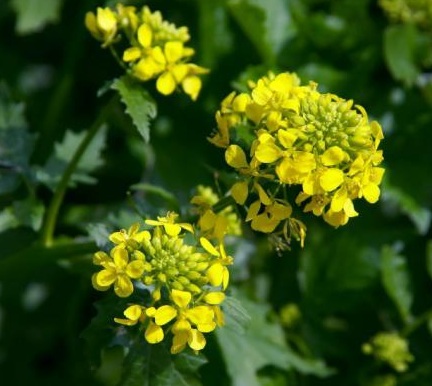
Features
Fruit
Production
Scientists serve up mustard meal to tame weeds
January 5, 2009 By USDA Agricultural Research Service
 January 5, 2009 – Sinalbin, the same compound that gives white mustard
January 5, 2009 – Sinalbin, the same compound that gives white mustard
its pungent flavour, could also prove useful in fighting weeds.
January 5, 2009 – Sinalbin, the same compound that gives white mustard its pungent flavour, could also prove useful in fighting weeds.
 USDA Agricultural Research Service (ARS) studies suggest sinalbin and other compounds released into soil by applications of white mustard seed meals can kill or suppress certain weedy grasses and annual broadleaf weeds.
USDA Agricultural Research Service (ARS) studies suggest sinalbin and other compounds released into soil by applications of white mustard seed meals can kill or suppress certain weedy grasses and annual broadleaf weeds.
Agronomist Rick Boydston, with the ARS Vegetable and Forage Crops Research Unit in Prosser, Wash., is conducting the studies with plant physiologist Steven Vaughn, at the ARS National Center for Agricultural Utilization Research in Peoria, Ill. They evaluated the effects of three mustard seed application rates: half a ton, one ton and two tons per acre. Of the three, the one-ton and two-ton rates worked best in peppermint, reducing barnyard grass, green foxtail, common lambsquarters, henbit and redroot pigweed populations by 90 per cent several weeks after application.
Although young peppermint plants sustained minor damage from the treatment early on, they recovered and resumed their normal growth. Onions weren’t so lucky. Regardless of the application rate used, the treatment severely damaged the bulb crop when applied before emergence, or before the onions produced two true leaves. Applications at the two-leaf stage or later were more promising.
Besides white mustard, the researchers also evaluated the weed-control effects of field pennycress seed meal and dried distiller grains (DDGs), derived from corn ethanol production. Like white mustard, field pennycress also has potential as a biodiesel crop. It and the DDGs were less effective than white mustard at controlling weeds.
The research aim is three-fold: provide organic farmers with an alternative to hand-pulling, burning and other laborious methods of weed control in specialty crops including peppermint and potted ornamentals; develop value-added uses for seed meal, should mustards prove useful in making biodiesel; and diminish environmental risks possibly resulting from conventional herbicide use.
Print this page